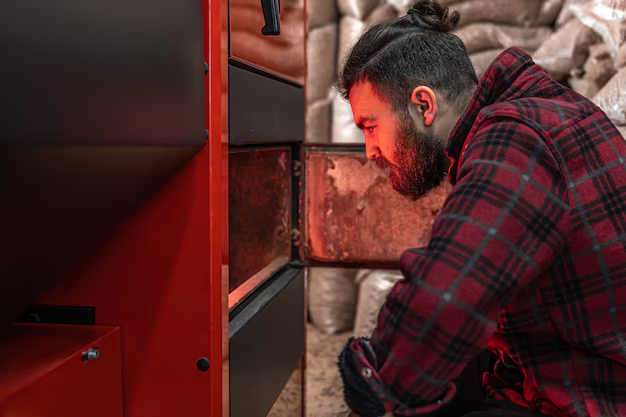Unclogging Your Refrigerator Drain Tube: A Step-by-Step Guide
If you've ever opened your refrigerator and found a small puddle forming inside or noticed that it's not cooling efficiently, there's a good chance you might be dealing with a clogged drain tube. This often-overlooked component plays a vital role in your refrigerator's functionality by ensuring that condensation is correctly drained away. In this comprehensive guide, we'll walk you through how to unclog a refrigerator drain tube, explore associated ramifications, and offer strategic maintenance tips to prevent future blockages.
Why the Drain Tube Matters
The Role of the Drain Tube
The refrigerator drain tube is a small but crucial component that funnels excess water from the fridge's defrost cycle to a pan at the appliance's bottom. A blocked drain tube can lead to water accumulation, fostering mold growth, increasing energy usage, and even causing your fridge to work less efficiently.
Signs of a Clogged Drain Tube
Here are some common symptoms to watch for:
- Puddles of Water: Noticeable water accumulation inside your fridge or around its base.
- Mildew Smell: A distinct odor might emerge due to trapped water and subsequent microbial growth.
- Inefficient Cooling: A rise in your fridge's interior temperature as the unit struggles to maintain its set temperature.
Preparing to Unclog the Drain Tube
Before embarking on the cleaning process, make sure you have everything you need. Gathering all necessary materials and ensuring safety prevents further complications.
Tools and Materials You’ll Need
- Rubber Gloves: To protect your hands from grime and cold temperatures.
- Screwdriver: For removing any panels blocking access to the drain tube.
- Wire or Pipe Cleaner: To clear the obstruction within the tube.
- Warm, Soapy Water: Ideal for thorough internal cleaning.
- Baking Soda: A gentle abrasive and deodorizer.
- Turkey Baster or Syringe: To flush out the tube.
- Cleaning Cloth or Towels: For wiping up any spills.
Safety First
- Unplug the Refrigerator: Ensures you won't experience any electrical shocks.
- Remove Stored Food: Transfer perishables to a cooler to keep them fresh during the process.
Step-by-Step: How to Unclog Your Refrigerator Drain Tube
Step 1: Finding the Drain Hole
Locate the Drain Hole: This is usually found at the bottom of the fridge compartment. In most models, it's beneath the vegetable drawers, behind a cover or panel.
Step 2: Accessing the Drain Tube
- Remove Necessary Parts: Use a screwdriver to gently remove any covers ensuring to note how everything is positioned for reassembly.
- Identify the Tube: Look for a small hole leading to a tube, often lined along the fridge's back wall.
Step 3: Clearing the Block
- Gently Unclog the Tube: Using a wire or pipe cleaner, remove any noticeable debris blocking the tube.
- Flush the Tube: With a turkey baster or syringe, squirt warm soapy water into the tube until the blockage is cleared.
- Repeat if Necessary: Continue these steps until water flows freely through the drain tube.
Step 4: Clean the Fridge Interior
- Clean and Deodorize: Mix baking soda with water to wipe down the entire area. This helps prevent odors.
- Reassemble Panels: Close up the removed panels or covers, ensuring everything is tightened securely.
Post-Cleaning Tips
Testing Your Handiwork
- Monitor for Puddles: After the fridge runs for a few hours, check for water accumulation.
- Listen for Sounds: Normal hums and kicks can tell you that the fridge is functioning properly.
Maintenance Routine
- Regular checks: Ensure that the drain is clear every few months.
- Keep the Fridge Clean: Wipe spills promptly, reducing additional debris from entering the tube.
Pondering Refrigeration: Additional Maintenance Tips
Wider Maintenance Considerations
- Temperature Check: Set your fridge to the recommended 37°F (3°C) and freezer to 0°F (-18°C).
- Seal Inspection: Examine door seals regularly to retain cold air efficiently.
- Defrost Appropriately: This reduces ice buildup that can exacerbate clogs.
Consumer-Friendly Maintenance Schedule 🗓️
Weekly:
- Quick visual inspection for spills and leaks
- Wipe down surfaces to prevent buildup
Monthly:
- Inspect seals for wear
- Check temperatures and adjust if necessary
Quarterly:
- Thorough clean of interior (shelves, drawers, and walls)
- Examine and clean the drain tube
Reflecting on Your Success
With this guide, you're now equipped to handle one of the more common issues that arise with refrigerators. Taking action based on this thoughtful approach not only saves money typically spent on repair services but also enhances the operational efficiency and longevity of your appliance. By incorporating these strategies, your refrigerator will remain a reliable member of your kitchen ensemble, ensuring your food stays fresher longer. With routine checks and care, a blocked drain tube can quickly become a thing of the past.
